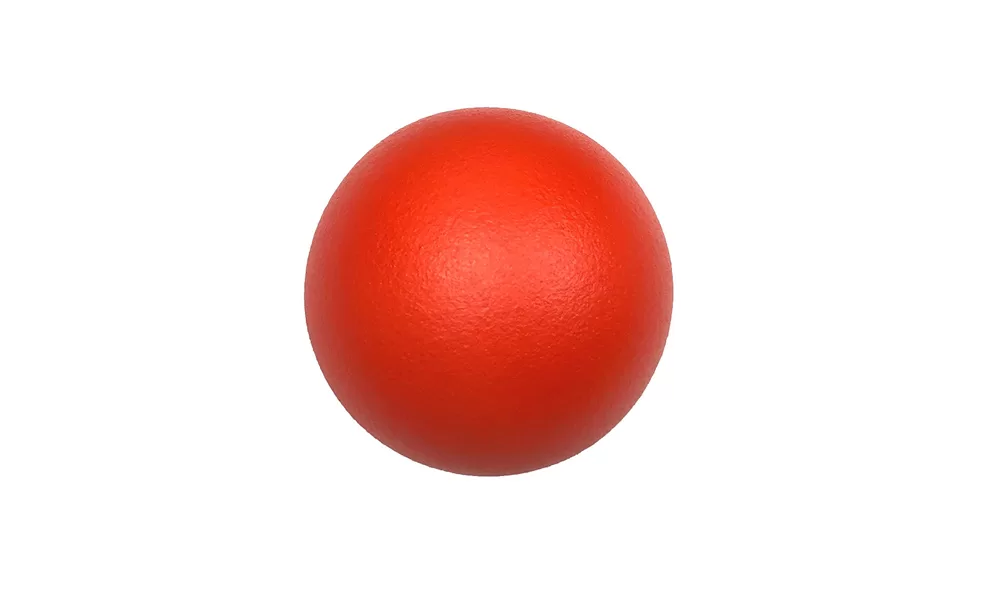البوليسترين والبولي يوريثين هما مادتان شائعتان الاستخدام في إنتاج كرات الرغوة. ولكل مادة خصائصها وتطبيقاتها الفريدة، مما يجعلها مناسبة لاستخدامات مختلفة. توفر هذه المقالة مقارنة شاملة بين مجالات رغوة البوليسترين ومجالات رغوة البولي يوريثان، وتناقش خصائصها وتطبيقاتها ومزايا وعيوب كل منها.

فهم مجالات رغوة البوليسترين
كرات رغوة البوليسترين هي نوع من مادة البوليمر الاصطناعية التي تستخدم على نطاق واسع في مختلف الصناعات بسبب خواصها الخفيفة والعازلة والقابلة للطفو. إنها مصنوعة من البوليسترين، وهو بلاستيك قائم على البترول، ويشيع استخدامها في أجهزة التعبئة والتغليف والعزل والتعويم. يتم تحديد الخصائص الفيزيائية لمجالات رغوة البوليسترين إلى حد كبير من خلال بنيتها. وهي تتألف من شبكة من الخلايا الكروية الصغيرة المغلقة التي تحبس الهواء بداخلها. يمنح هذا الهيكل الرغوة خواصها الخفيفة والعازلة. يمكن التحكم في حجم وكثافة الكرات أثناء عملية التصنيع، مما يسمح بإنتاج الرغاوي بخصائص مختلفة لتطبيقات محددة.
فهم مجالات رغوة البولي يوريثان
كرات رغوة البولي يوريثان هي نوع آخر من مواد البوليمر الاصطناعية التي تستخدم على نطاق واسع في مختلف الصناعات. إنها مصنوعة من مادة البولي يوريثين، وهو نوع من البوليمر يتكون من تفاعل البوليول (جزيء يحتوي على مجموعات وظيفية متعددة من الهيدروكسيل) والإيزوسيانات. يتم تحديد الخصائص الفيزيائية لمجالات رغوة البولي يوريثان إلى حد كبير من خلال تركيبها والأنواع المحددة من البوليولات والإيزوسيانات المستخدمة في تصنيعها. وهي تتألف من شبكة من الخلايا الكروية الصغيرة المغلقة التي تحبس الهواء بداخلها. يمنح هذا الهيكل الرغوة خواصها الخفيفة والعازلة. يمكن التحكم في حجم وكثافة الكرات أثناء عملية التصنيع، مما يسمح بإنتاج الرغاوي بخصائص مختلفة لتطبيقات محددة.
مقارنة الخصائص الفيزيائية
عند مقارنة الخصائص الفيزيائية لمجالات رغوة البوليسترين ومجالات رغوة البولي يوريثان، يمكن ملاحظة العديد من أوجه التشابه والاختلاف. كلا النوعين من الكرات الرغوية خفيف الوزن، وله خصائص عزل ممتازة، ويتكون من شبكة من الكرات الصغيرة المغلقة التي تحبس الهواء بداخلها. ومع ذلك، هناك أيضًا بعض الاختلافات الرئيسية بين الاثنين. على سبيل المثال، تعتبر كرات رغوة البولي يوريثان بشكل عام أكثر مرونة ومرونة من كرات رغوة البوليسترين. ويرجع ذلك إلى وجود روابط اليوريتان في سلسلة البوليمر، والتي تعطي الرغوة خصائصها المرنة.
مقارنة الخصائص الحرارية
من حيث الخواص الحرارية، فإن كلاً من مجالات رغوة البوليسترين والبولي يوريثان تظهر عزلًا حراريًا ممتازًا بسبب هيكلها ذو الخلايا المغلقة. ومع ذلك، تتمتع مجالات رغوة البولي يوريثان عموما بمقاومة حرارية أعلى من مجالات رغوة البوليسترين. وذلك لأن رغوة البولي يوريثان لديها موصلية حرارية أقل، مما يعني أنها أكثر فعالية في تقليل انتقال الحرارة. وهذا يجعل مجالات رغوة البولي يوريثان مناسبة بشكل خاص للتطبيقات التي تتطلب عزلًا حراريًا فائقًا، مثل عزل المباني وتغليف المنتجات الحساسة لدرجة الحرارة.

مقارنة الأثر البيئي
عندما يتعلق الأمر بالتأثير البيئي، تواجه كل من مجالات رغوة البوليسترين والبولي يوريثان مجموعة من التحديات الخاصة بها. تساهم رغوة البوليسترين، كونها منتجًا بتروليًا، في استنفاد الموارد غير المتجددة وهي غير قابلة للتحلل البيولوجي، مما يؤدي إلى مخاوف بيئية كبيرة. يمكن تصنيع رغوة البولي يوريثان، رغم أنها مشتقة أيضًا من المنتجات البترولية، بعمليات ومواد صديقة للبيئة أكثر. ومع ذلك، فإنه يطرح أيضًا مشكلات تتعلق بالتخلص لأنه لا يتحلل بسهولة في البيئة. يمكن إعادة تدوير كلتا المادتين، لكن العمليات معقدة وغير متاحة على نطاق واسع.
مقارنة التكلفة
من حيث التكلفة، فإن إنتاج كرات رغوة البوليسترين أقل تكلفة بشكل عام من إنتاج كرات رغوة البولي يوريثان. ويرجع ذلك إلى حد كبير إلى عملية التصنيع الأبسط وانخفاض تكلفة المواد الخام للبوليسترين. ومع ذلك، يمكن أن تختلف التكلفة اعتمادًا على الخصائص المحددة وجودة الرغوة. توفر رغوة البولي يوريثان، رغم أنها أكثر تكلفة، خصائص أداء فائقة، مما قد يبرر التكلفة الأعلى في بعض التطبيقات.
تطبيقات مجالات رغوة البوليسترين
تُستخدم كرات رغوة البوليسترين على نطاق واسع في مجموعة متنوعة من التطبيقات نظرًا لخصائصها الخفيفة والعازلة والطفوية. يتم استخدامها بشكل شائع في مواد التعبئة والتغليف والعزل وأجهزة التعويم. بالإضافة إلى ذلك، غالبًا ما يتم استخدامها في الحرف اليدوية والديكور نظرًا لسطحها الأملس وسهولة الطلاء. وتشمل التطبيقات الأخرى استخدام مواد البناء خفيفة الوزن وإنتاج مواد الخدمات الغذائية التي تستخدم لمرة واحدة.
تطبيقات مجالات رغوة البولي يوريثان
تُستخدم كرات رغوة البولي يوريثان في مجموعة واسعة من التطبيقات نظرًا لمرونتها ومرونتها وخصائصها العازلة الممتازة. يتم استخدامها بشكل شائع في الأثاث والفراش لراحتها ومتانتها. كما أنها تستخدم في عزل المباني والأجهزة، وفي قطع غيار السيارات للحد من الضوضاء والاهتزاز، وفي التعبئة والتغليف لخصائصها الوقائية. وتشمل التطبيقات الأخرى استخدامها في الأجهزة الطبية وفي المعدات الرياضية بسبب خصائصها في امتصاص الصدمات.

خاتمة
تتمتع كل من مجالات رغوة البوليسترين والبولي يوريثان بخصائصها وتطبيقاتها الفريدة. في حين أن كرات رغوة البوليستيرين خفيفة الوزن وصلبة ولها قدرة طفو ممتازة، فإن كرات رغوة البولي يوريثان أكثر كثافة وأكثر مرونة ولها خصائص عزل فائقة. يعتمد الاختيار بين الاثنين على المتطلبات المحددة للتطبيق.

